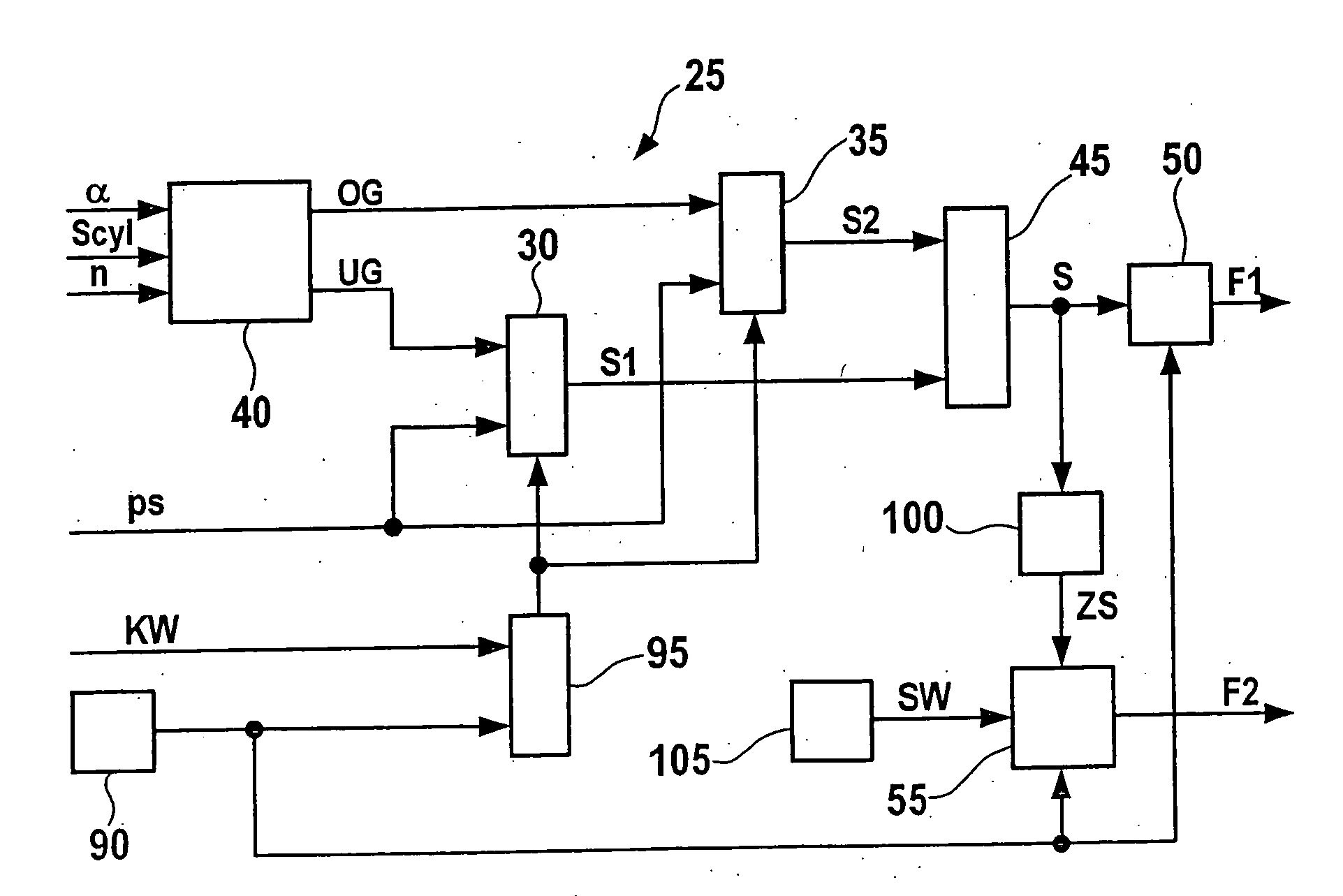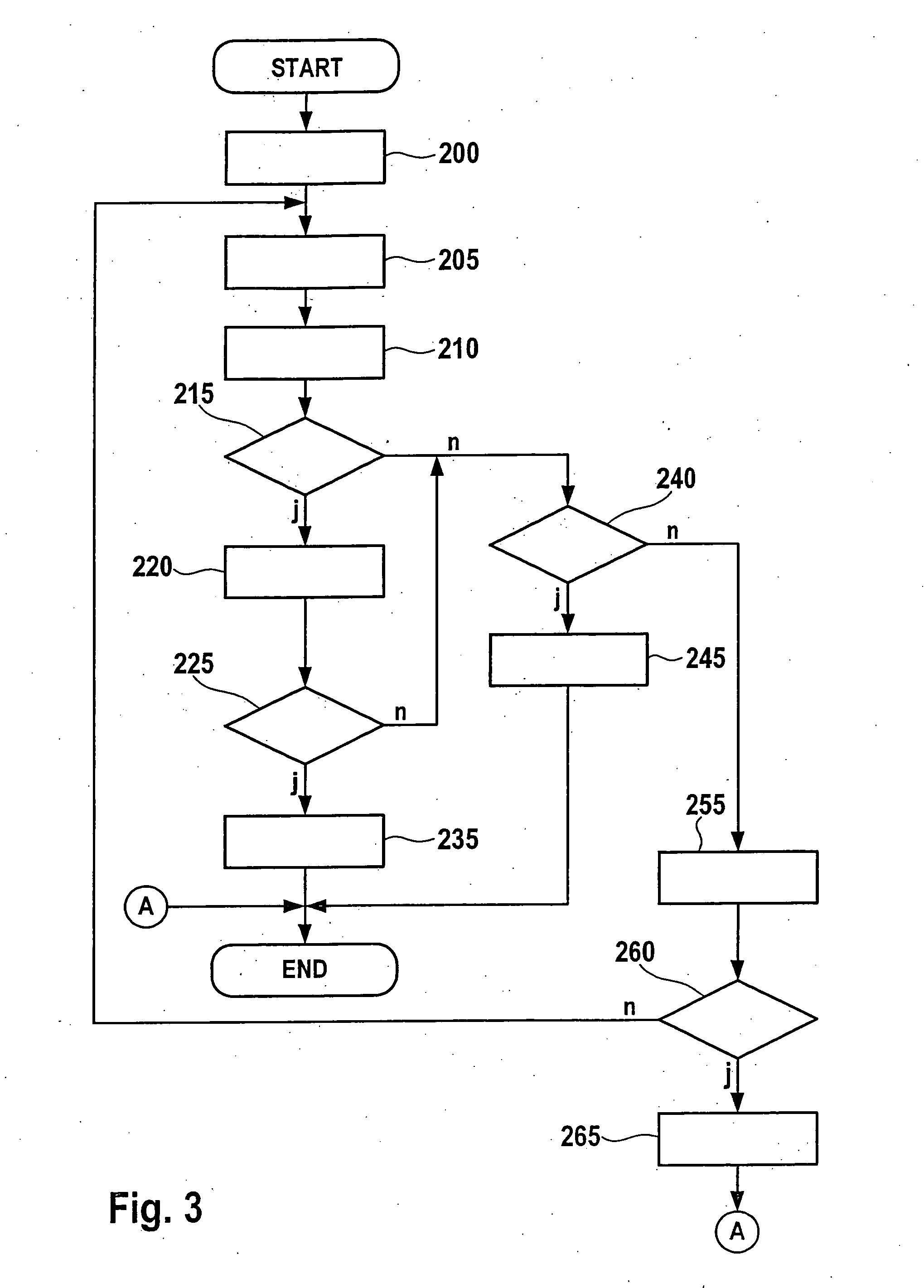Device and method for monitoring the intake manifold pressure of an internal combustion engine
a technology of internal combustion engine and intake manifold, which is applied in the direction of machines/engines, electrical control, instruments, etc., can solve the problems of error persisting and recognition of achieve the effect of avoiding error in the operation of the intake and/or exhaust valve of at least one cylinder, reducing the probability of error, and improving the accuracy of the model
- Summary
- Abstract
- Description
- Claims
- Application Information
AI Technical Summary
Benefits of technology
Problems solved by technology
Method used
Image
Examples
Embodiment Construction
[0020]FIG. 1 shows an internal combustion engine 1, which may be designed as a gasoline engine or a diesel engine, for example. In the following it will be assumed, for example, that internal combustion engine 1 is designed as a gasoline engine. Internal combustion engine 1 includes one or more cylinders 15, only one of which is shown in FIG. 1 as an example. Air is supplied to a combustion chamber of cylinder 15 from an intake manifold 20 via one or more intake valves 5. Fuel is also supplied to the combustion chamber, the air / fuel mixture being ignited in the combustion chamber of cylinder 15 by a spark plug. The exhaust gas formed by the combustion of the air / fuel mixture is expelled into an exhaust tract 80 via one or more exhaust valves 10. Fresh air is supplied into intake manifold 20 via an air supply 65 and a throttle valve 60. Intake manifold pressure ps is detected with the aid of an intake manifold pressure sensor 70 in intake manifold 20. The signal, measured with the ai...
PUM
 Login to View More
Login to View More Abstract
Description
Claims
Application Information
 Login to View More
Login to View More - R&D
- Intellectual Property
- Life Sciences
- Materials
- Tech Scout
- Unparalleled Data Quality
- Higher Quality Content
- 60% Fewer Hallucinations
Browse by: Latest US Patents, China's latest patents, Technical Efficacy Thesaurus, Application Domain, Technology Topic, Popular Technical Reports.
© 2025 PatSnap. All rights reserved.Legal|Privacy policy|Modern Slavery Act Transparency Statement|Sitemap|About US| Contact US: help@patsnap.com



